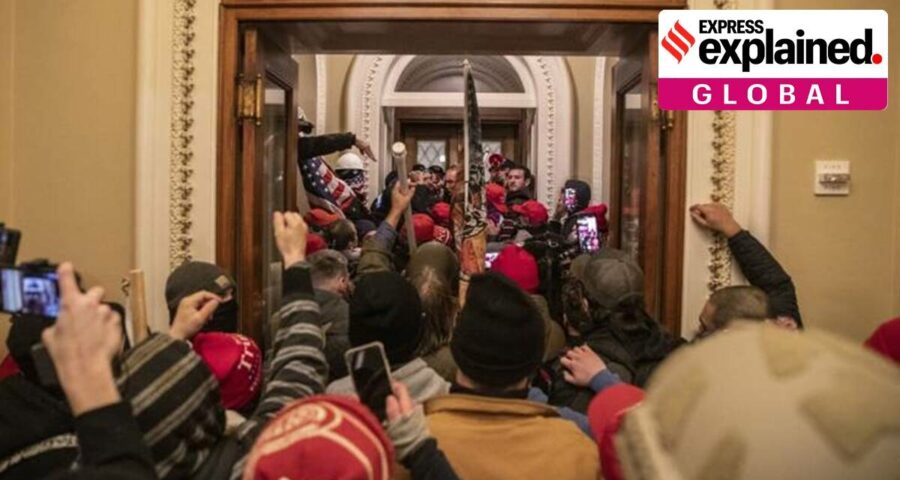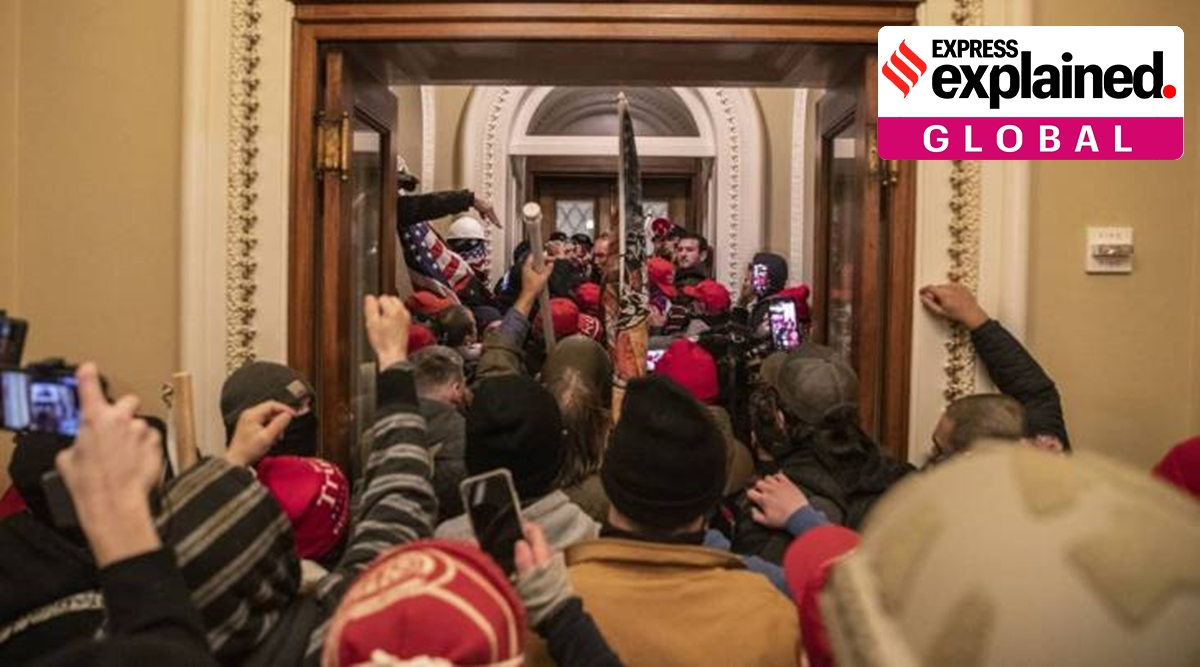While no major artworks were reportedly severely destroyed, some works were damaged when the insurrectionists broke into the building. Experts are working on the required cleaning and conservation.
Joe Biden might have taken over as the 46th President of the United States, but the Capitol Hill siege by Trump supporters continues to be discussed world over, from its nature to the long-term ramifications. Having condemned the actions of the violent mob, now museums in the US are documenting the historic day by collecting the ephemera used by protesters, and estimating the damage done to the Capitol Building’s historic art collection. Here is how museums have responded to the crisis:
How museums reacted
Museums across the US condemned the pro-Trump mob attack on Capitol Hill. “The attack on the United States Capitol was an act of domestic terrorism that violated our nation’s highest values… The actions of these treasonous rioters underscore the threat to democracy in a society where misinformation, racism and other hateful ideologies are allowed to run rampant,” said Dan Weiss, president of Metropolitan Museum of Art, and Max Hollein, its chief executive, in a statement. “The siege on Capitol Hill yesterday during the joint Congress’ ratification of the presidential election should be condemned, not coddled,” said a statement by the National Civil Rights Museum.
Jack Kliger, president and CEO of the Museum of Jewish Heritage, stated, “We have a responsibility to stand up and condemn the blatant bigotry displayed at the Capitol on Wednesday.”
Also in Explained | Here’s why telcos could launch 5G as early as September
How museums are documenting the siege
The National Museum of American History has picked up objects like signboards, stickers, flags, and other ephemera that were discarded by rioters on January 6. A post on its Twitter handle read: “In 2021, our curators continue their work to document our nation’s political history, including the storming of the Capitol, the second impeachment of President Donald Trump, and the inauguration of President-elect Joseph Biden. As curators from the museum’s Division of Political and Military History continue to document the election of 2020, in the midst of a deadly pandemic, they will include objects and stories that help future generations remember and contextualize Jan. 6 and its aftermath”.
📣 JOIN NOW 📣: The Express Explained Telegram Channel
Statement from the National Museum of American History’s Elizabeth Macmillan Director Anthea M Hartig, read: “As curators from the museum’s Division of Political and Military History continue to document the election of 2020, in the midst of a deadly pandemic, they will include objects and stories that help future generations remember and contextualize Jan 6 and its aftermath. As stewards of the nation’s leading history museum, we want to hear from you. Please safely save any materials that could be considered for future acquisition and send photos and brief descriptions of these objects to [email protected]. Your contributions help us in our goal of educating each new generation about the historical roots of our moment and empowering them to shape our future.”
Also in Explained | Why are Bairstow, Buttler being rested for a part of the Test series against India?
“I think the people who did the attack on the capitol are insurrectionist, immoral, and bad news all the way around… but if they left stuff behind, it should be preserved and studied later. We have to look at, ‘What did we learn?’ ” stated Jane Campbell, president of the US Capitol Historical Society in the Washington Post.
Also in Explained | How Economic Survey has projected a growth of 11% in FY 2021-22
Damage to artworks in Capitol Hill
While no major artworks were reportedly severely destroyed, some works were damaged when the insurrectionists broke into the building. According to reports, statues, murals, historic benches and so on were damaged from pepper spray, tear gas and fire extinguishers. Experts are working on the required cleaning and conservation. Initial reports suggested that a man reportedly crammed a framed photo of the Dalai Lama into his backpack, a 19th-century marble bust of former President Zachary Taylor “was defaced with a red substance that looked like blood”.
According to a report published in The Washington Post, “Gas-doused artifacts — including a marble statue of Thomas Jefferson, marble busts of House speakers Joseph Gurney Cannon, Joseph W. Martin Jr., Thomas Brackett Reed and Champ Clark and portraits of James Madison and John Quincy Adams — were being sent to the Smithsonian for assessment and restoration. A 19th-century gold mirror in Speaker Pelosi’s office was smashed and will be repaired.”
Source: Read Full Article


